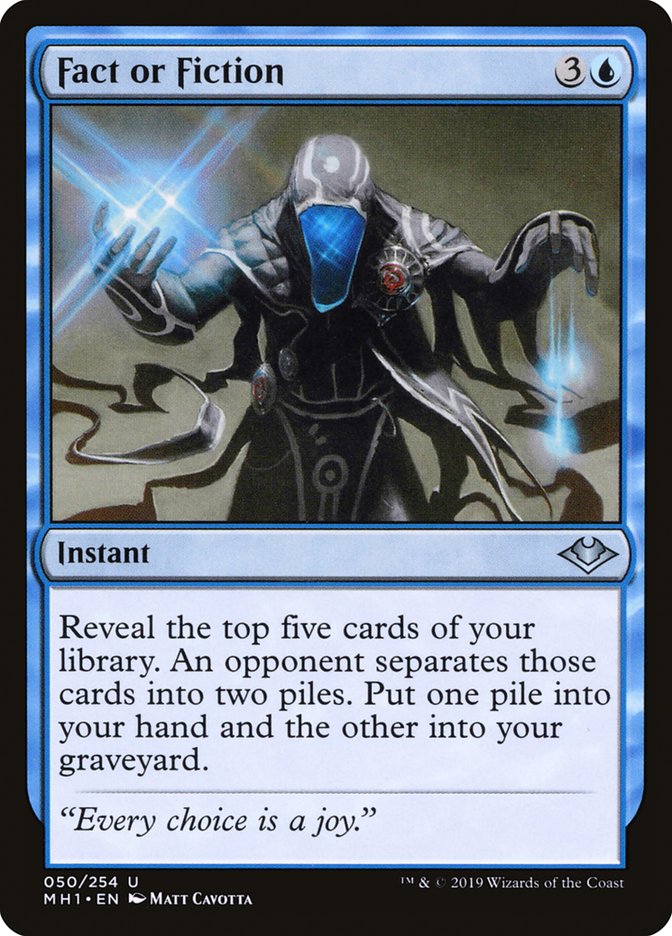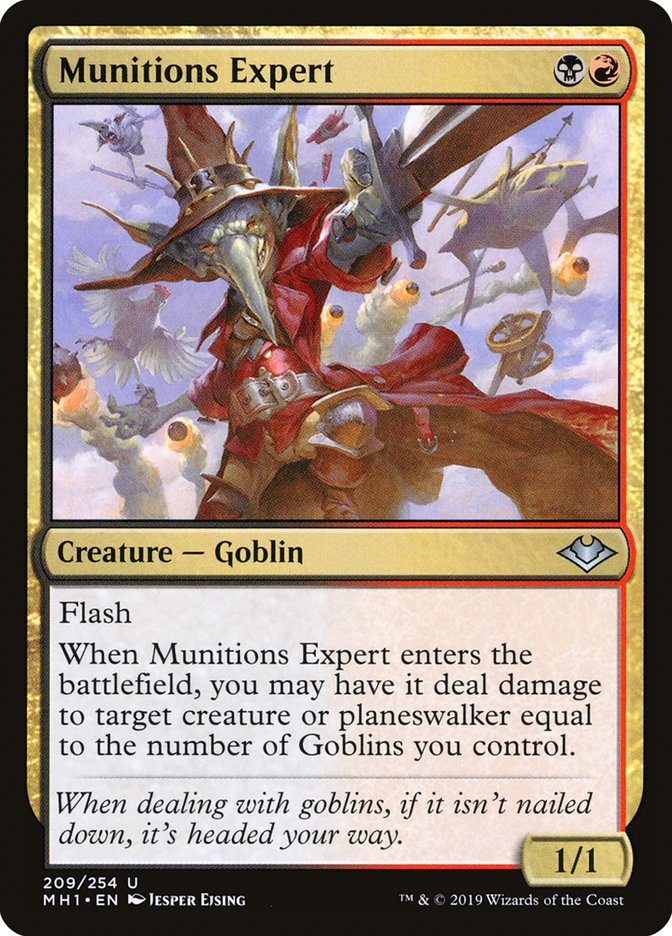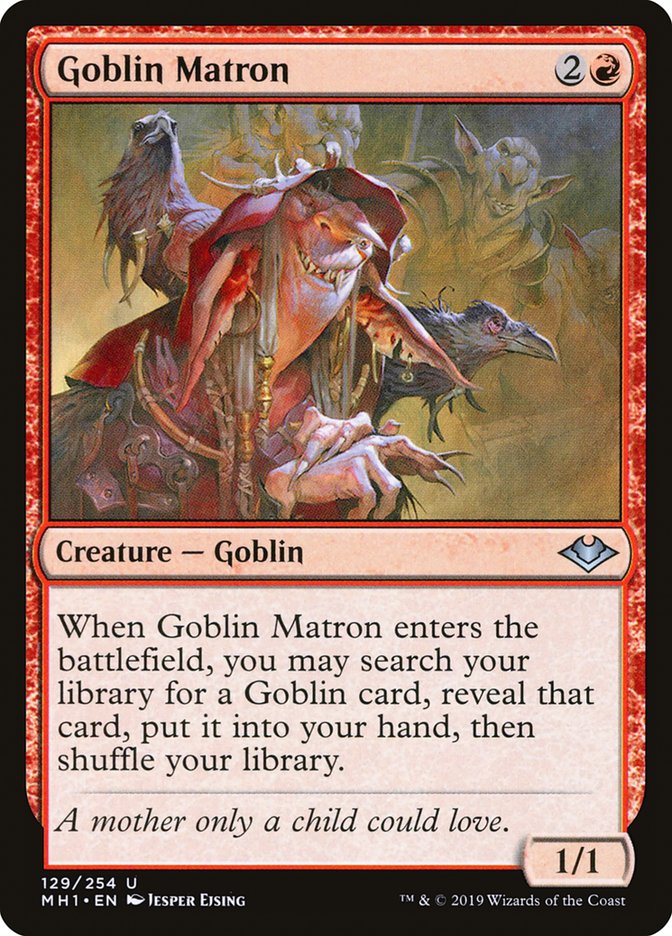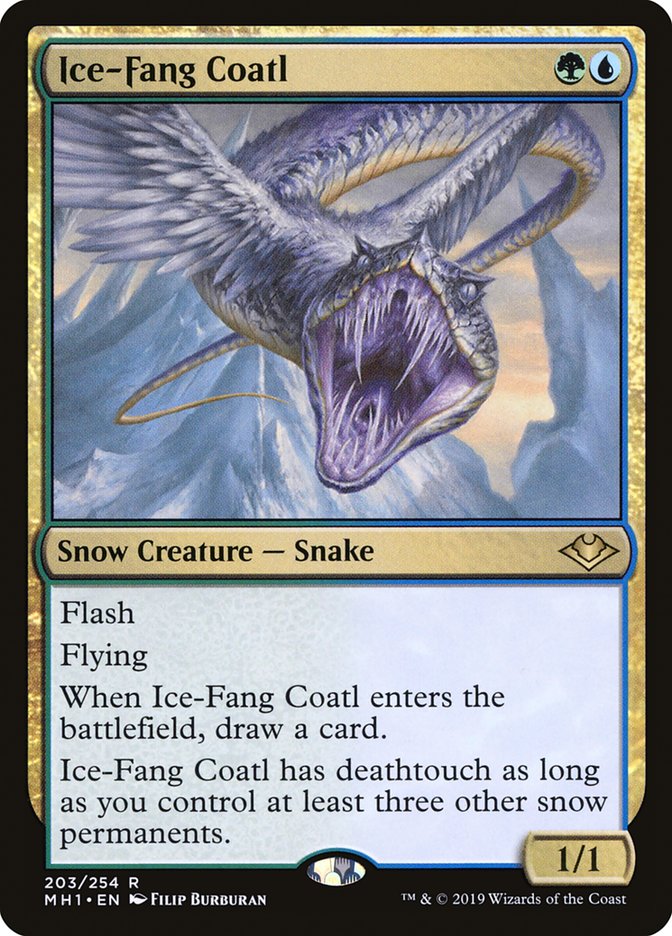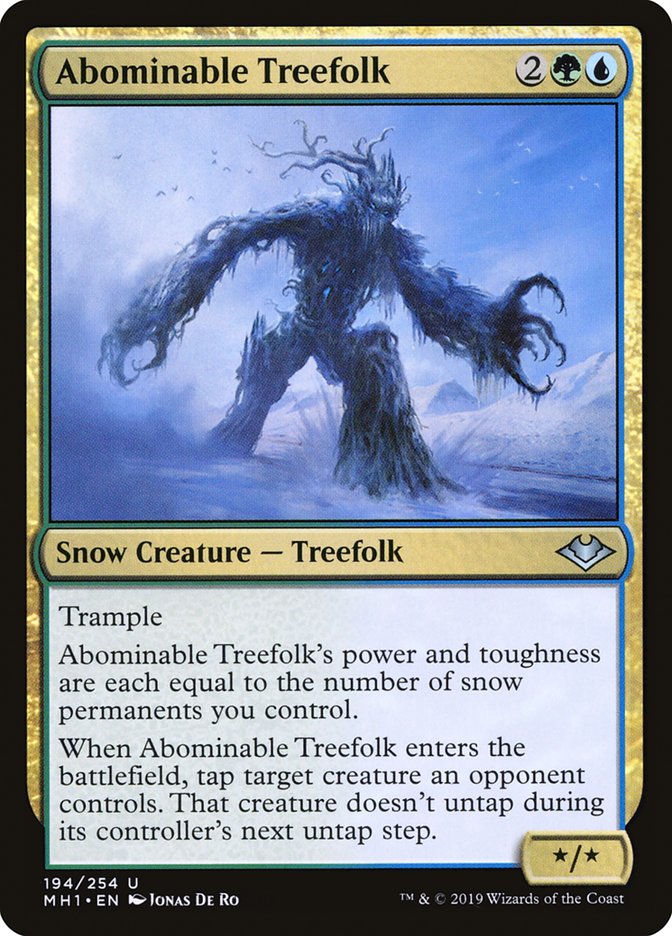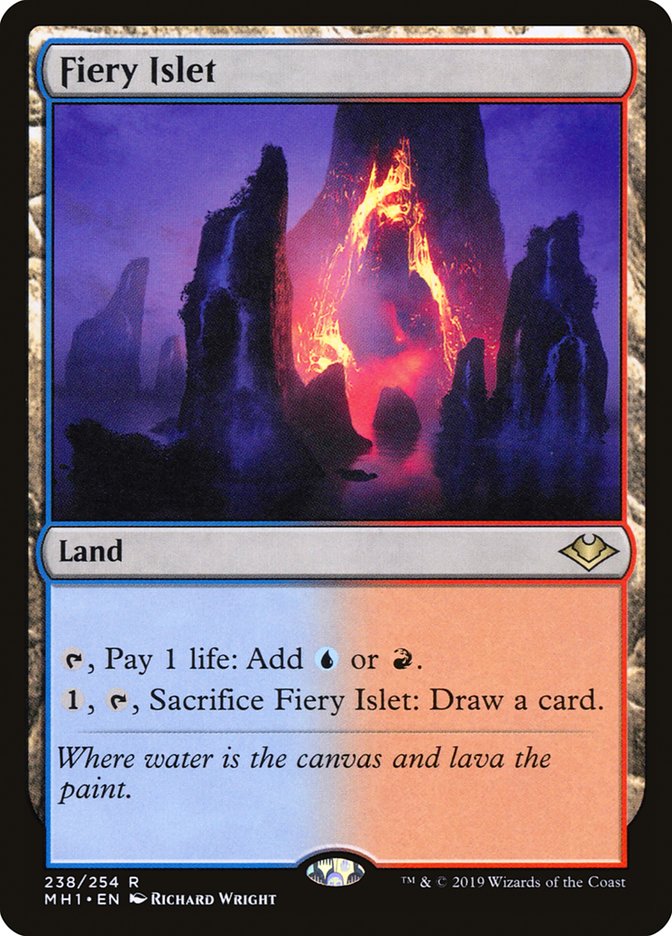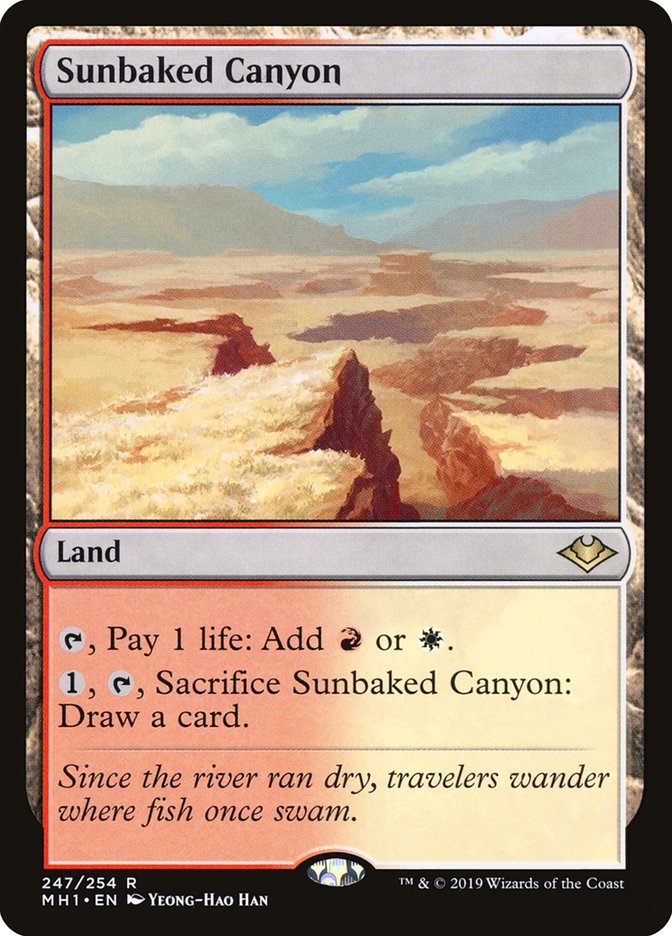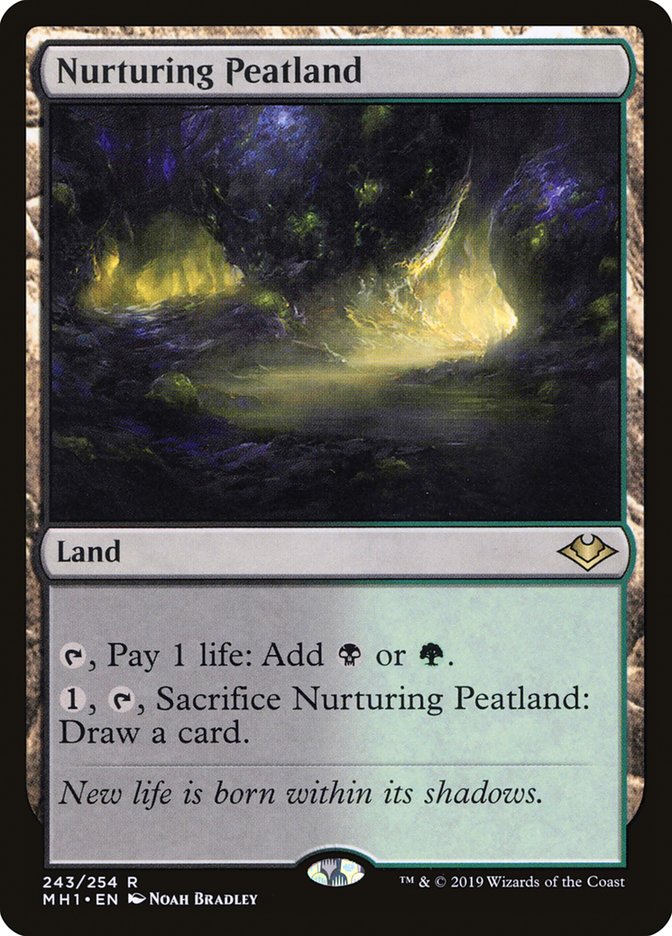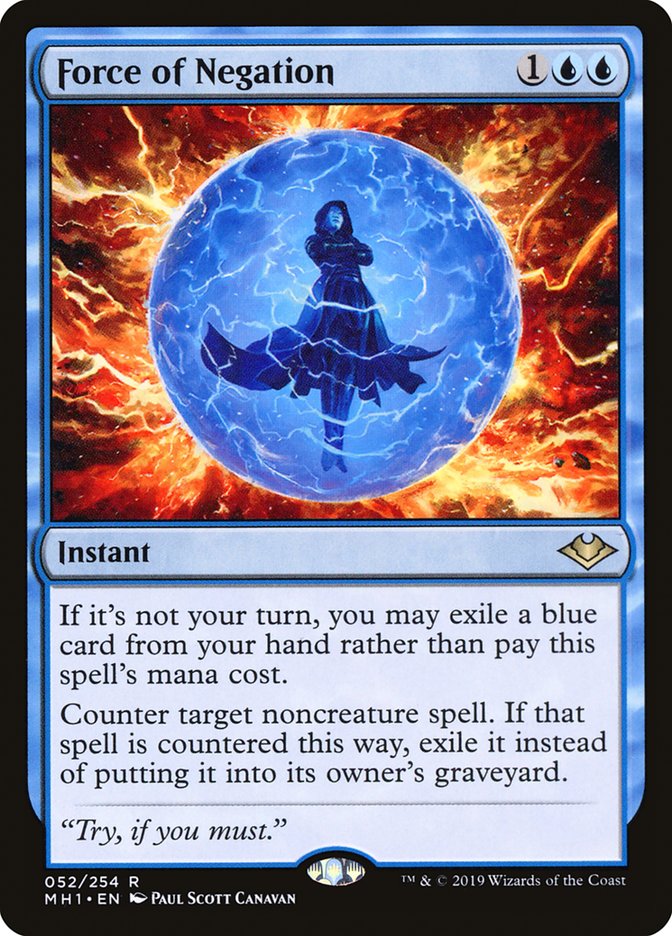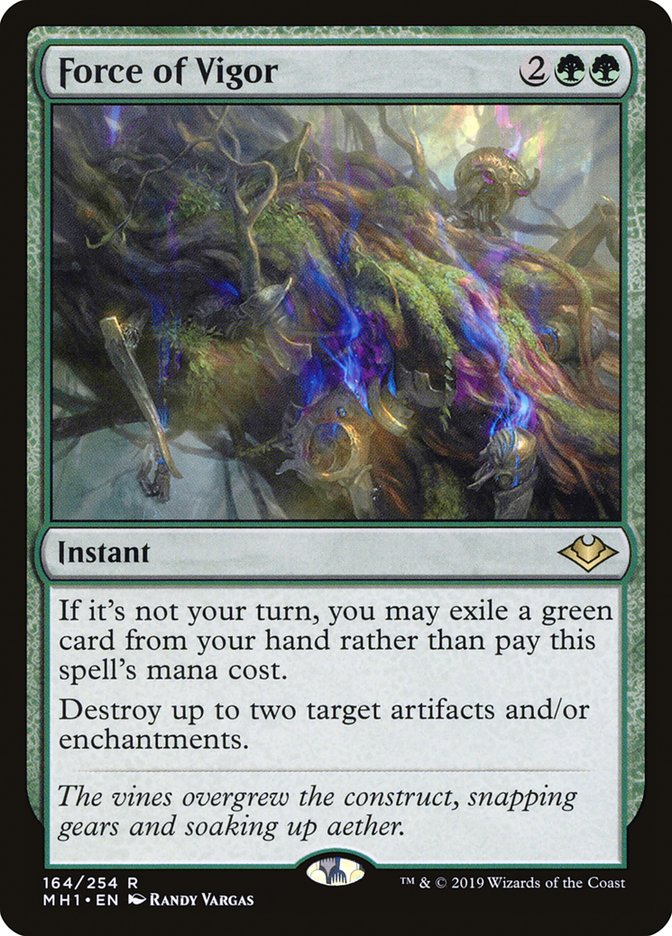Welcome to another edition of Fact or Fiction! Today, Ari Lax, Brad Nelson, and Patrick Sullivan are here to render their verdicts on five statements about Modern Horizons. Don’t forget to vote for the winner at the end!
1. The return of Fact or Fiction in Modern Horizons is a boon for control strategies in Modern.
Ari Lax: Fiction. “Boon” is a strong word.
I think Fact or Fiction is playable in Modern. We were playing Hieroglyphic Illumination a couple of months ago, and now Fact or Fiction evades Narset, Parter of Veils because it doesn’t say “draw cards.” It is a huge cardboard swing, and the reason it doesn’t see Legacy play is the non-Modern-legal Wasteland and Daze.
But “boon?” How many four-drops can you play in Modern? How many four-drops that don’t interact with your opponent? How many that don’t stone cold kill them like Jace, the Mind Sculptor? One, sideboard a second?
Fact or Fiction is fine, but it won’t change Modern control the way War of the Spark planeswalkers have.
Brad Nelson: Fiction. Anyone who thinks Fact of Fiction is going to see serious play in Modern needs a serious reality check. This is the format where Karns are coming down on Turn 3, humanitarian strategies kill on Turn 5 with disruption, and many combo that are winning in the very early turns. There’s just no room for a card like Fact or Fiction in this format. Hell, Cryptic Command is barely a Magic card in this format and that card does two things!
I get it, I really do. Control players aren’t winning in Standard, so they look to get their fix in another format, but the deck just isn’t looking for something like Fact of Fiction. It’s just too slow! I get that everyone wants to experience the glory days of this card, but its days are long since gone. It will be a good card in Limited, but don’t expect it to be winning Modern tournaments.
Patrick Sullivan: Fiction. Nothing wrong with Fact or Fiction, and it could end up in a handful of decks, especially if the metagame slows down. The value over replacement seems low, and blue control decks already have to consider Cryptic Command and Jace, The Mind Sculptor as powerful-but-occasionally-cumbersome four-mana plays. I don’t think that necessarily dooms Fact or Fiction – Jace requires spending mana on your own turn, and so Fact or Fiction may be a more natural pairing alongside Cryptic Command – but it does highlight just how high the bar is.
This will be a recurring theme among my analysis of Modern Horizons – many of the cards are closer to “interesting thing to consider” than “obvious boon.” I think that’s great. Modern is a deep and powerful format and trying to usher in 50 highly impactful cards at the same time is more likely to do harm than good. So far, I think Wizards of the Coast has been wise in choosing reprints with a lot of splash but not necessarily a ton of impact, and Fact or Fiction lands squarely in that camp.
2. With the debut of Munitions Expert and reprinting of Goblin Matron, Goblins now has the necessary tools to be competitive in Modern.
Ari Lax: Fiction. The best cards in Legacy Goblins were Wasteland, Rishadan Port, Aether Vial, Goblin Lackey, and Goblin Ringleader. It was a disruptive deck with a crazy card advantage engine and free wins from Lackey.
Modern only has Aether Vial of these cards. That’s not the most broken one by far.
The biggest hit is the mana disruption. Modern Goblins doesn’t have the lock potential and has to go fast to win. Goblin Matron is just not close to the speed of the format (and again can’t find Goblin Ringleader).
In fairness, the next-best card is Gempalm Incinerator and Munitions Expert is close enough to that to see play. But I’m not even sure Legacy Goblins without the mana disruption would be Modern-playable, so this isn’t enough.
Brad Nelson: Fact. Goblins was my introduction to competitive Magic way back in 2003. I played the deck for two years straight, and it taught me about combat math, transitional sideboard plans, and playing around sweepers. There will always be a soft spot in my heart for this reckless tribe. That said, I just don’t think there’s a chance that…Goblins won’t be one of the best decks in Modern!
That’s right, it’s time for these green alien-looking freaks to take over this stupid format. It always frustrated me that Onslaught Block wasn’t in Modern, since it was home for all the best Goblins, but now most of them have been reprinted over the years. With the inclusion of these two cards, this deck is going to be very real! Especially when you consider these two cards are most likely just the beginning of previewed Goblins.
I expect the warrens to become empty once we finally see the entire set!
Patrick Sullivan: Fact. Not in a “best deck right out the box” sort of a way, but at least enough going on for me to kick the tires. Goblin Matron and Munitions Expert are a bit dissonant with the current best Goblin enablers, like Goblin Grenade and Goblin Bushwhacker, that suggest a fast, explosive, low-to-the-ground sort of game. But the new cards are just so powerful that it’s worth scrapping the previous incentives and starting over.
I would rate Goblin Matron and Munitions Expert as more compelling rewards than Thalia’s Lieutenant and Champion of the Parish, and while the base of Humans is probably more powerful and flexible than their analogs for Goblins, it isn’t embarrassing, either. Wouldn’t surprise me if Goblins was still a bit short when everything shakes out, but it won’t be due to the new options, both of which are bangers.
3. You’re excited about the return of snow and the design space it brings along with it to Modern.
Ari Lax: Fact-ish. Downside first. Snow is kinda like devoid on the surface level. It’s a weird rider ability that doesn’t mean a lot on the surface.
But if you have the right incentive for snow mana or permanents, you open up the basic land angle. With the rare land cycle apparently revealed to not be snow duals, in order to play snow payoffs in Modern, you need a lot of Snow-Covered Mountains. The drop-off in dual lands in turn constricts your color spread, constricts your double-up commitments, and more. The recently previewed Prismatic Vista, as a generic untapped basic land fetcher, will play a big role as a way to hit eight fixers that produce a snow land.
I don’t think snow is an inherently cool mechanic, but it definitely falls into interesting “restrictions breed creativity” territory given the context of Modern.
Brad Nelson: Fiction. Hell no! Do you think I moved away from North Dakota to experience more snow? The only time I played with snow was during Coldsnap, and I really wasn’t a fan. I didn’t like having to draft the lands so I could try to pull off cool things, and I hated it even more that my opponents were so smug about “stealing the snow lands.” Good job, Frank, you have now successfully drafted seventeen playable cards!
From a design space, sure, it adds more interesting gameplay. For example, monstrous activations used to commonly happen when players flooded out. Now a player can flood out and still not activate their creature’s abilities. That tension will make for some very exciting gameplay!
All snow permanents will do in Modern is make people think Skred is playable again, which is about as cruel of a joke to Mono-Red Prison players as it was reprinting Fact or Fiction for control players.
Patrick Sullivan: Fiction. Snow is boring as hell. The opportunity cost to play with a bunch of snow basics is essentially zero; jokers like Jim Davis regularly do it just to agitate me. When the opportunity cost is that low (the real cost is playing that many basics in the first place), there’s a cap on how powerful the rewards can be and how compelling the interaction points are in games that involve it. It does not help matters that the most powerful previous enabler is Scrying Sheets, which is literally as boring as a design can get.
The mechanic is self-referential in a way that constrains how different the card choices are and has no gameplay actually built in, so everything has to come from the very narrow set of cards one can play. That’s a recipe for boring and scripted deckbuilding and gameplay. Snow is comfortably short in Modern and there’s something to be said for the novelty of new decks showing up, so maybe a little love is a good thing, but I hope this is not one of the mechanics given a new lease on competitive life.
4. The enemy-colored Horizon Canopy lands are the most powerful cards previewed thus far in Modern Horizons.
Ari Lax: Fact. I’ll take the easy out here. Yes, Horizon Canopy sees play in basically every Selesnya deck. Yes, a bunch of non-Selesnya decks play Horizon Canopy because it makes one of their colors and draws a card. Yes, if you printed a monocolored cycle of these, they would see play.
So yes, these are the best cards previewed to date.
My one contender is Urza, Lord High Artificer. Mana from artifacts is repeatedly broken, especially when it’s blue mana that casts nonartifact spells. Urza also does so many things on top of that. It gives baseline value by making a second body. It gives additional value over time and forces an answer, in a way that it sinks its own mana. Yeah, it costs four mana, but it immediately returns at least one of that.
Brad Nelson: Fact. I wanted to argue against this, but I just don’t see how I can. Force of Negation is a great card and all, but Horizon Canopy has been a Modern staple since the format’s inception. Who even knows where the other versions of this cycle end up, since it’s clearly a very powerful ability!
I don’t really have anything more to say about this. I could try to brew up decks with the other variations, but that would be half-hearted and most likely misleading content. Instead, I’ll use my time on this platform to tell you all to stop playing Esper Control in Standard. Seriously, this deck is garbage, but don’t throw it in the trash. If you like change fifteen cards, you have a perfectly respectable Esper SuperFriends deck which is actually competitive.
Thank you for your time.
Patrick Sullivan: Fact. This one is a bit tricky because of value-over-replacement issues. Horizon Canopy has a history of showing up in monocolored decks, so it’s hard to know exactly how much it matters to have six instead of one. That said, it has that history because it’s so good on rate that you don’t need it to be Savannah to justify playing it, and now three colors have access to it that didn’t before. I suppose I’m the most skeptical of the blue ones – with their best cards historically being things like Snapcaster Mage and Cryptic Command, blue decks are hungry for more mana, not more cards – but Sunbaked Canyon seems like a major upgrade for Boros Burn, and it’s easy to imagine previous Golgari and Orzhov decks that would have loved an in-color Horizon Canopy.
Maybe Force of Negation ends up shaping the format the most, maybe Flusterstorm ends up the most-played card, but speaking to raw power level, these lands are the best cards previewed so far.
5. Force of Negation and Force of Vigor are finally free spells done right.
Ari Lax: Fact // Fiction. Force of Negation is a good spot. It handles all the primary issues with Force of Will as a proactive way to force through threats, and the problems a too-good generic counterspell creates. The more card types and text matter against the most efficient counterspells, the better.
I have issues with Force of Vigor, though. The “only on their turn” clause doesn’t make unique gameplay with it; you just kill their two best cards regardless. Unconditional, sweeping, instant, free hate cards just aren’t fun, either. This is like Ravenous Trap, but if you didn’t have the three-card condition against the less all-in graveyard decks, and if Dredge payoffs weren’t all free. You realize this is a free spell that kills two things that cost mana?
If you want to manage Mox Opal this hard, just ban it. Or maybe I’m looking at the wrong format. Restrict Mishra’s Workshop, cowards.
Brad Nelson: Fact? So I think these cards are very well done, but I also think the Pact cycle was wonderful. Sure, you can say Pact of Negation is too good, but that usually only happens when something else degenerate is being “forced” through like Primeval Titan. I honestly love Ad Nauseam as a deck, as it’s such a good safety net for when the format gets too linear, and that deck’s Simian Spirit Guides and Pact of Negations are very fair.
This shouldn’t take away from the design space of these cards, specifically Force of Negation. I love the idea of a counterspell that protect us from an opponent’s gameplan, but we all know what’s going to happen, right? Combo decks will start killing on opponents’ turns, and they will use this card out of the sideboard to fight other combo decks. That’s most likely fine, and this card will most likely not see a lot of play unless the format gets really messed up.
So you could say this card is going to do Ad Nauseam’s job of making sure the format never gets too degenerate, which is something I can sign off on.
Patrick Sullivan: Fact. I think free spells are dubious design space – the stress that gets released when your opponent taps out and you know you can just do your thing is a great thing about Magic’s mana system, and free spells fly in the face of that. There are degrees, however. Force of Will is generalized enough that the average player can say “I can’t play around it anyway,” which releases stress in a different way. Also, Force of Will requires a blue card, meaning your opponent has probably signaled it as a possibility by playing an Island at some point. And it’s hard to imagine healthy eternal formats without it, even though it also contributes to fast kills. For various reasons, Force of Will is a better sort of free spell than the smattering of proactive, color-pie-bleeding, and totally-without-signal sort found in New Phyrexia.
Even though I like that Modern generally rewards players for being proactive, I do think the degree to which the format has become only that is unhealthy. A major risk for free spells, even ostensibly defensive ones, is that they do more work forcing through combo kills or otherwise ending the game too quickly – think Leyline of Sanctity. Even though the conditions and text boxes are a bit unwieldy, it’s obvious that WotC had very specific goals for this cycle – have them be explicitly good at defending players rather than forcing through quick wins, and have them be color-bound so there’s some signal to the opposing player what is possible. Assuming those goals are achieved in practice, I think Modern will be a better place for it.


